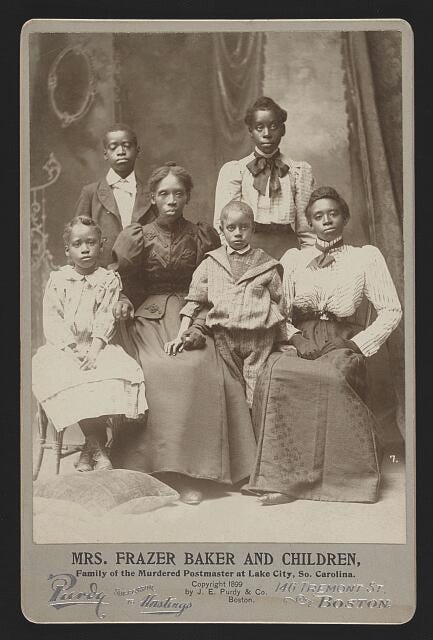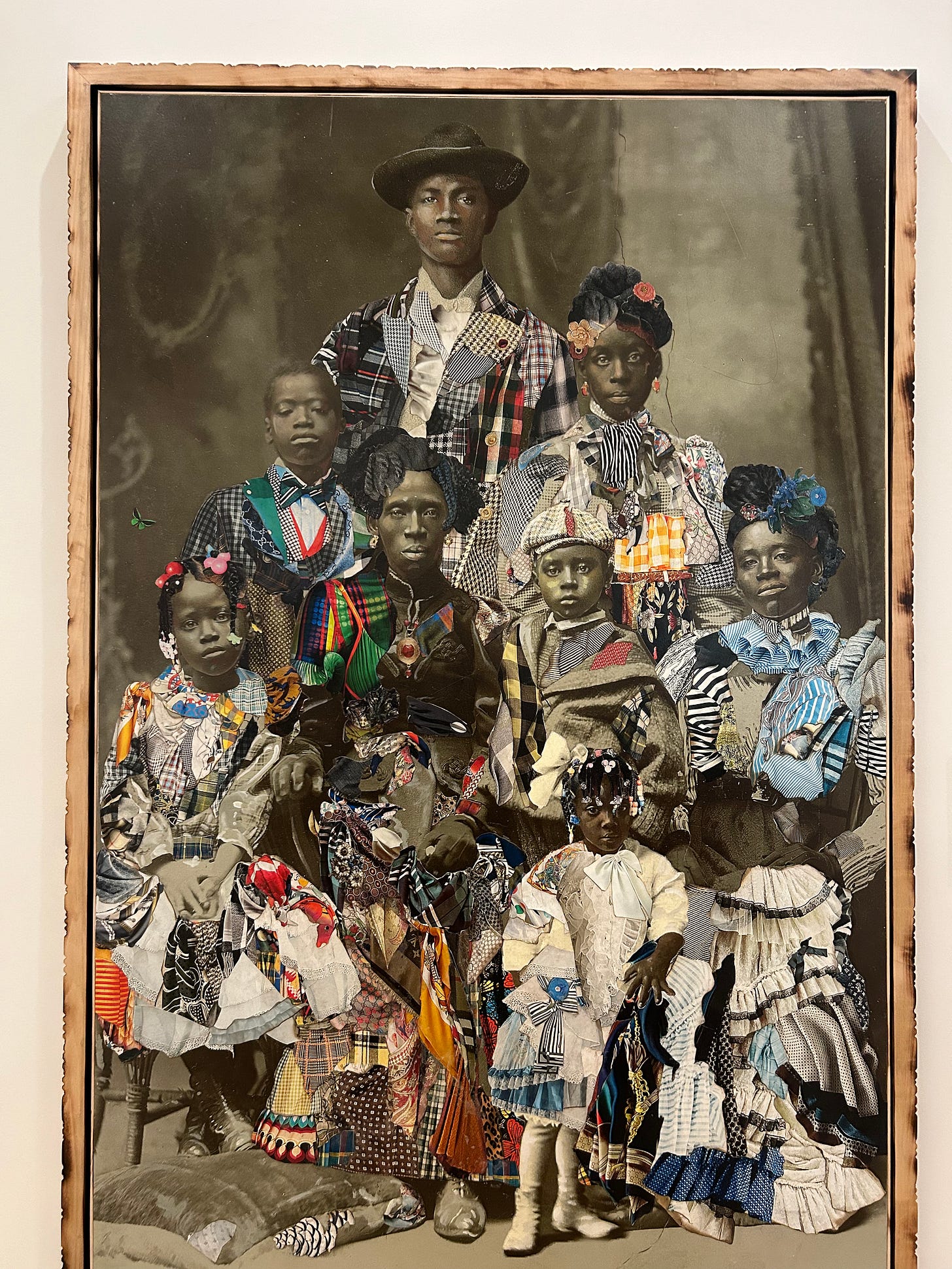An Exploration of Other Ways of Knowing, Rooted in Lake City, South Carolina, ca. 1899
Ancestors
📸: Baker by Stan Squirewell, Washington, D.C. Mixed media collage on canvas with Shou Sugi Ban Frame (2021), From the Collection of the International African American Museum
Mirror Moment(s): Other Ways of Knowing
Hey y’all! After a break, I am back with one of my favorite archival pieces to date. In June, I had the pleasure of presenting at my first archives conference & there was a lot to unpack & reassess. Maybe I will share a separate post-conference essay at a later date. For now, I am sharing this beautiful mixed-media piece that I had the pleasure of seeing in person at the International African American Museum (IAAM) in Charleston, South Carolina.
Upon coming across Baker, I immediately recognized the archival photograph that Squirewell used as a base for his piece. Furthermore, I could connect the dots because I knew the context of the original photograph.
In the original photograph, created or published in 1899, there are only six people present in the frame. This is because the year prior, a Black man: husband, father, son, & newly appointed USPS Postmaster of Lake City, South Carolina named Fraizer B. Baker & his infant daughter were lynched by a white mob. Steeped in insecurity & white supremacy, the white mob vehemently rejected Fraizer’s appointment & utilized terror to enact a solution they wrongly saw as fit.

The summary of the original photograph from the Library of Congress reads…
“Photograph shows Lavinia Russell Baker (also spelled Levina and Levinah in historical records) and her five surviving children after the lynching of her husband, Lake City, South Carolina, Postmaster Frazer or Frazier Baker, and their daughter, Julia, on February 22, 1898. The Post Office and Baker family home was burned and family members were attacked by gunfire as they sought to escape.”
According the to label at the IAAM, “there are no known images of Fraizer B. Baker.” Therefore, Squirewell imagined how Fraizer showed up in the world by placing him at the head of the family portrait. Placing Fraizer at the top of his photographed family creates a triangular-shaped portrait.
While the IAAM label mentions Squirewell recentering & placing Fraizer in the family portrait it fails to mention another key part of his work. The 1899 photograph has only six people in it, & Squirewell’s work (including Fraizer) makes seven subjects total. However, in Baker, there are eight subjects present in the mixed media piece. Intentionally or unintentionally, the label doesn’t mention that Squirewell has also reimagined a little Black girl in Baker.
Standing on the ground to the right of the pillow on the floor is a little Black girl with pink, white, & blue beads in her hair. She is the smallest person in the portrait which leads me to infer she is the youngest person as well. The young girl also has a white bow on the left side of her head, a white bow around her neck, & a blue & white striped bow on her dress. Her head is tilted down but her gaze is looking straight up. This young Black girl’s right arm & hand is resting on the knee of who I infer is her sister.
Not only did, Squirewell reimagine & include Fraizer but I believe his infant daughter Julia Baker is also reunited with her kin in this piece. When Julia was lynched she was only an infant but in this mixed media piece, we see what she could’ve grown up to look like had her life not been taken as a result of white terror & violence. We get to see Julia envisioned as a young Black girl leaning on her older sister & backed by her entire family to support her. Squirewell stretches the borders of the archive to unite the entire Baker family.
It feels good to be sharing with y’all again. Please tell a friend to tell a friend & share D.O.T.S. with the folk in your community 💛.




